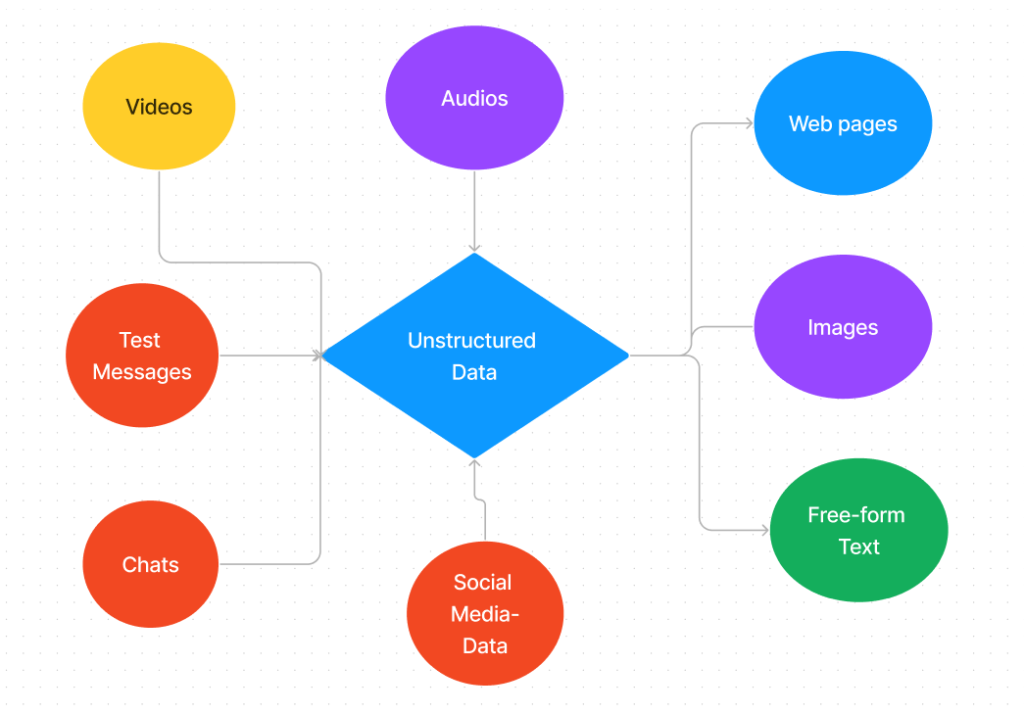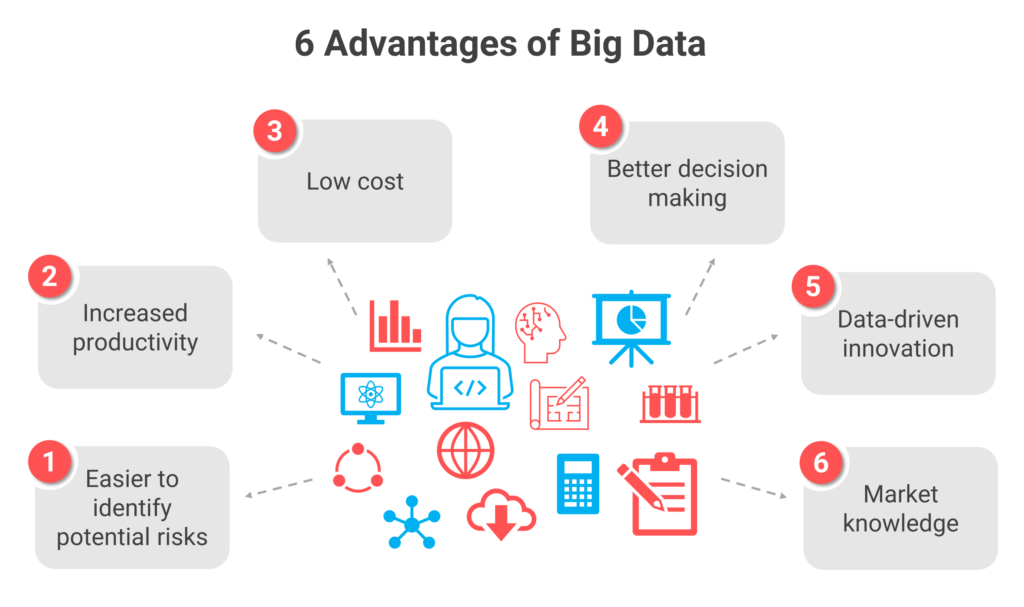In the contemporary business environment, Big Data Analytics has emerged as a game-changing element in driving effective decision-making processes. Organizations today are inundated with vast amounts of data, and the ability to extract meaningful insights from this data is crucial for maintaining a competitive edge. This article delves into the multifaceted role of Big Data Analytics in driving business decisions, examining its evolution, benefits, and challenges, while also exploring the emerging trends set to shape its future.
Introduction to Big Data Analytics in Business
Big Data Analytics refers to the use of advanced analytical techniques and tools to process large and complex datasets that traditional data processing software cannot handle. This practice enables businesses to uncover hidden patterns, correlations, and trends that can inform strategic decision-making. With the exponential growth of data generated from various sources, including social media, transactional systems, and IoT devices, organizations must harness big data in business decisions to thrive in a fast-paced marketplace. By leveraging data effectively, companies can enhance their operational efficiency, improve customer engagement, and ultimately drive business growth.

Evolution of Decision-Making with Big Data
The landscape of decision-making has undergone a significant transformation with the advent of Big Data Analytics. Traditionally, decisions were often based on intuition and historical data, which could be misleading. However, the rise of data-driven decision-making has shifted the paradigm, enabling organizations to make informed choices based on real-time insights. This evolution is fueled by the digital transformation that has permeated every industry, making it essential for businesses to adapt quickly to changing market dynamics.
The integration of big data decision-making into business strategies allows companies to respond more effectively to market trends and consumer behavior. For instance, retailers can analyze sales data to determine product performance and optimize inventory levels accordingly. This strategic approach minimizes risks and enhances the overall decision-making process, allowing businesses to remain agile and responsive to customer needs.

Types of Big Data in Business Applications
Understanding the different types of big data is crucial for leveraging its full potential in business applications. Data can be categorized into three main types: structured, unstructured, and semi-structured.
- Structured data is highly organized and easily searchable, often found in relational databases. Examples include transaction records and customer details.
- Unstructured data, on the other hand, lacks a predefined format and includes data from sources such as social media posts, emails, and multimedia content. This type of data presents a challenge but also offers significant insights if analyzed properly.
- Semi-structured data contains both structured and unstructured elements, such as XML files and JSON data.
By employing Big Data Analytics, organizations can integrate and analyze these diverse data types, providing a comprehensive view that informs business decisions. Utilizing data from various sources enables companies to create a more holistic understanding of customer behavior and market trends, leading to more effective strategies and improved outcomes.

Key Benefits of Big Data in Business Decisions
Integrating Big Data Analytics into business processes offers numerous benefits that can significantly enhance decision-making capabilities. One of the most notable advantages is the ability to make big data in business growth decisions based on factual insights rather than assumptions. This approach minimizes the risk of costly errors and improves the accuracy of forecasts.
Additionally, Big Data Analytics fosters operational efficiency by identifying inefficiencies within processes and highlighting areas for improvement. For instance, organizations can use analytics to monitor supply chain performance, enabling them to optimize inventory management and reduce costs. The capacity to analyze vast datasets in real time also allows businesses to respond promptly to market changes, ensuring they remain competitive.
Moreover, data-driven decision-making enhances customer understanding. By analyzing customer interactions and preferences, companies can tailor their offerings to meet specific needs, thereby increasing customer satisfaction and loyalty. This level of personalization not only drives sales but also fosters long-term relationships with customers.

Core Big Data Technologies and Tools
To effectively harness Big Data Analytics, organizations must employ a variety of technologies and tools designed to manage and analyze large datasets. Some of the most prominent technologies include:
- Machine Learning (ML): This subset of artificial intelligence enables systems to learn from data and improve over time without being explicitly programmed. ML algorithms are widely used in predictive analytics, allowing businesses to forecast trends and behaviors based on historical data.
- Big Data Processing Frameworks: Technologies such as Apache Hadoop and Apache Spark facilitate the storage and processing of large volumes of data across distributed systems, making it easier for organizations to analyze complex datasets.
- Data Visualization Tools: Visual representation of data is crucial for effective communication of insights. Tools like Tableau and Power BI allow decision-makers to visualize complex data sets, making it easier to identify patterns and trends.
By leveraging these technologies, organizations can implement robust big-data decision-making frameworks that drive strategic initiatives and enhance business performance.
Big Data Analytics in Operational Decision-Making
Operational decision-making is a critical area where Big Data Analytics plays a transformative role. Organizations can analyze workflow data to identify bottlenecks and inefficiencies within their operations. For instance, manufacturers can monitor equipment performance in real time, using predictive analytics to foresee maintenance needs and reduce downtime.
This proactive approach minimizes operational disruptions and extends the lifespan of machinery, resulting in significant cost savings. Additionally, by leveraging analytics to streamline processes, organizations can allocate resources more effectively, enhancing overall productivity. As a result, businesses can achieve a higher return on investment (ROI) while maintaining a competitive edge in their respective industries.
Data-Driven Strategy for Customer Insights
Understanding customer behavior is paramount in today’s competitive landscape. Big Data Analytics enables businesses to gain profound insights into customer interactions, preferences, and purchasing patterns. By analyzing customer data, organizations can develop targeted marketing strategies that resonate with their audience, leading to improved engagement and higher conversion rates.
For example, a telecommunications company can use analytics to identify usage patterns among its customer base, allowing it to tailor service offerings to different segments. Additionally, predictive analytics can be employed to identify customers at risk of churn, enabling proactive measures to improve retention rates.
Personalization is a key outcome of big data in business decisions, as it allows organizations to create customized experiences that foster loyalty and satisfaction. Companies that effectively harness data-driven insights are better positioned to anticipate customer needs and adapt their strategies accordingly.
Market and Competitive Analysis Through Data
In the realm of competitive strategy, Big Data Analytics provides organizations with the tools to perform thorough market and competitive analysis. By analyzing external data sources, such as industry reports and social media trends, businesses can identify emerging market opportunities and assess competitor performance.
Real-time data analytics allows companies to stay ahead of market trends, enabling them to adapt their strategies swiftly. For instance, a fashion retailer can monitor social media trends and sales data to identify rising styles, allowing it to stock inventory accordingly and optimize marketing efforts.
The ability to leverage data for market analysis not only enhances strategic decision-making but also positions organizations to capitalize on opportunities as they arise. By understanding the competitive landscape, businesses can make informed decisions that drive growth and maintain relevance in a rapidly changing market.
Risk Management and Mitigation with Big Data
Big Data Analytics plays a pivotal role in risk management by helping organizations identify potential risks and develop effective mitigation strategies. By analyzing historical data and identifying patterns, businesses can predict future risks and take preventive measures.
For example, financial institutions can use analytics to detect fraudulent transactions by analyzing transaction patterns and flagging unusual activities. This proactive approach significantly reduces the risk of financial loss and enhances overall security.
Furthermore, organizations can analyze data to assess the potential impact of external factors, such as economic fluctuations or regulatory changes. By understanding these risks, businesses can develop contingency plans that safeguard their operations and ensure long-term stability.
Building a Data-Driven Culture in Organizations
Creating a data-driven culture within an organization is essential for maximizing the benefits of Big Data Analytics. This cultural shift involves promoting data literacy among employees at all levels and integrating analytics into everyday operations and strategic planning.
To build a data-driven culture, organizations must provide training and resources that empower employees to utilize data effectively. This includes fostering collaboration between data analysts and decision-makers, ensuring that insights are communicated clearly and used to inform strategic initiatives.
By embracing a data-driven mindset, organizations can unlock the full potential of their data assets, enhancing their ability to respond to market dynamics and customer needs. This cultural transformation not only drives innovation but also positions businesses for sustainable growth in an increasingly data-centric world.
Challenges in Implementing Big Data Analytics
Despite the numerous benefits of Big Data Analytics, organizations face several challenges in its implementation. One of the primary concerns is data privacy and compliance, particularly with regulations such as GDPR. Businesses must navigate complex legal frameworks while ensuring that customer data is handled responsibly.
Additionally, data quality is a significant challenge, as organizations often contend with incomplete or inaccurate data. Ensuring that data is clean and reliable is crucial for effective analysis and decision-making. Furthermore, integrating data from various sources can be complex, requiring robust data management strategies.
Scalability is another critical issue, as organizations must be equipped to handle the increasing volume of data generated over time. Implementing scalable solutions is essential for sustaining the effectiveness of big data decision-making processes.
Future Trends in Big Data for Business Decisions
As we move into 2024 and beyond, several Big Data Analytics trends are set to shape the future of business decision-making. Emerging technologies, such as artificial intelligence and machine learning, will continue to enhance analytics capabilities, enabling organizations to extract deeper insights from their data.
The integration of real-time analytics will also become increasingly prevalent, allowing businesses to make decisions on the fly based on current data. This shift towards immediacy will empower organizations to respond more effectively to market changes and consumer behavior.
Furthermore, the focus on ethical data usage will intensify, as consumers become more aware of data privacy concerns. Organizations will need to prioritize transparency and accountability in their data practices to build trust with customers.
Conclusion,
Big Data Analytics is transforming# The Role of Big Data Analytics in Driving Business Decisions.
In the contemporary business landscape, Big Data Analytics has become an indispensable tool for organizations aiming to enhance their decision-making capabilities. With an overwhelming influx of data generated from various sources, the ability to extract actionable insights is crucial for maintaining a competitive edge. This article explores the multifaceted role of Big Data Analytics in driving business decisions, examining its evolution, benefits, challenges, and future trends.






One thought on “The Role of Big Data Analytics in Driving Business Decisions”
Comments are closed.